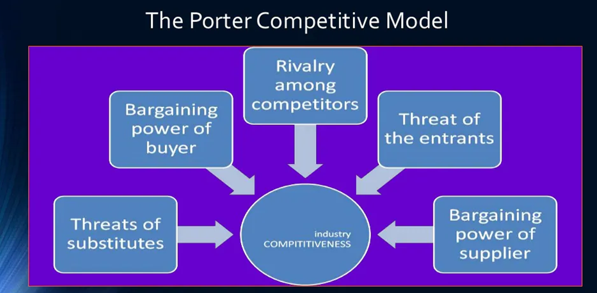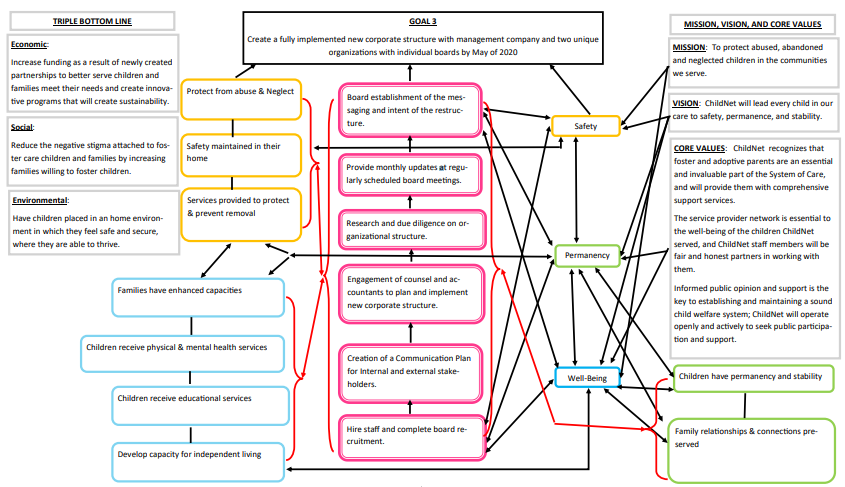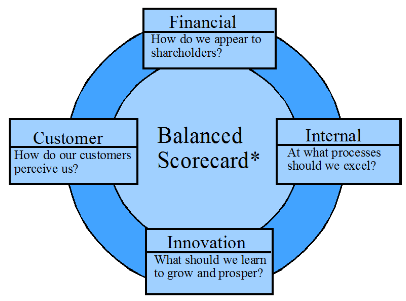Executive Summary
Childnet is a non-profit organization that has ensured that it improves the lives of many children and young people. Many children have also suffered abuse, abandonment, and neglect in their community. Consequently, these programs have been introduced to allow other individuals to take care of such children. There are some of the gaps that are present in the strategies implemented by the organization. For instance, Childnet has focused on making the internet a safe place for children. However, it does not campaign for how the internet can harm children and ways their parents can prevent such issues. Additionally, it does not focus on how communities can be encouraged to value young children. One can recommend that the organization should focus on creating awareness of the different services it offers. For instance, it can use social media and other media channels such as TV and radio channels for advertising its services. The platforms can also be used to encourage the public to focus on child welfare.
Introduction
Childnet has been significant in many communities as it focuses on the need to support and care for the children. The organization has improved the lives of many young people by helping them acquire foster parents and through adoption. The use of the internet has also become common in the modern world. Thus, Childnet has guaranteed that it works with other companies and individuals to make the internet a safe for children. The organization also helps in providing educational resources for children, parents, and teachers. This report focuses on the Childnet strategic plan and the various aspects, such as its internal and external and internal environment, vision, mission, core values, and gaps identified.
Current Vision, Mission, and Core Values
Vision
The current vision of Childnet is to improve the lives of the children and ensure that there are protected. Additionally, the vision is used by many organizations to reveal their purpose and primary objectives. In this case, people can learn from Childnet’s vision that it primarily focuses on the importance of child care. The vision states that Childnet will lead every child in its care to safety, permanence, and stability (Bond, 2017). Therefore, people understand that the organization focuses on ways it helps improve the lives of children by guaranteeing that every child is cared for and protected. Cases of cyberbullying in the modern world have also increased, and the company’s vision can be used to analyze these issues (Slater & Clapton, 2020). Therefore, the vision has a great significance to the organization as it focuses on how the company can achieve its goals and informing people about its main objectives.
Mission
Many companies use the mission statement to reveal what they aim to achieve and their plans. In this case, the current mission of Childnet international has largely helped the organization implement the strategies that improve the living standards of children in various regions. It states that Childnet’s mission is to work in partnership with others worldwide to protect the children (Jack, 2018). The mission provides a clear insight into what the corporation expects to achieve. In this case, companies from different countries can learn from Childnet’s mission to support it to protect children from facing challenges such as negligence, abuse, and harassment.
Core Values
Core values entail the procedures that guide workers in the various practices that an organization has introduced. The core values are that Childnet recognizes that foster and adoptive parents are a vital and invaluable part of the system of care (Enson, (2018). The organization ensures that the service provider network helps achieve the well-being of the children and the Childnet staff members (Svennevig et al., 2021). Being fair and honest are other aspects that have been analyzed in the core values of Childnet. The aspects guarantee that workers exercise no form of discrimination. Informed public opinion and support are other vital issues that Childnet has emphasized as its core values. Thus, the core values of Childnet have primarily focused on the well-being of the children and the need to provide comprehensive support services to the adoptive parents.
Changes to Curb Gaps
Suggested changes to curb gaps can be of great significance to the organization. For instance, the organization can ensure that it opens more branches in rural areas to enable its staff members to acquire more information regarding children facing different challenges. The branches can also educate people about ways they can help children avoid cyberbullying. Moreover, cyberbullying has also increased during the current pandemic since many children spend their time on the internet (Allkins, 2021). Another change would involve campaigning about the dangers of abusing and neglecting children. This approach can create awareness and can help limit the challenges many children face. Therefore, these changes can be of great significance and can improve the living standards of many children and help Childnet meet its objectives.
Leadership for the Organization
Childnet has focused on the various ways that it can use its leaders to meet its goals. Leaders in Childnet have ensured that they are at the forefront, guiding other members on ways that they can help meet both organizational and personal goals. Leadership styles used in the organization is also essential since it enables the firm reach its goals. Childnet uses a transformational leadership style to guarantee that all individuals in the corporation can contribute to the organization’s development. Typically, transformational leadership is a theory where leaders work with teams and guarantee that change is created through influence and inspiration (Anderson, 2017). Therefore, leaders can warrant that they encourage members to be innovative and ensure that the organization is more productive.
There can be a scope for effective strategic planning based on the analysis of visionary leadership. For instance, the organization can encourage its leaders to develop teams with a particular goal and work towards achieving the goal. Additionally, the plan can involve motivating team members to be innovative and design new ways that can be exercised to improve the living standards of children. For instance, the use of modern technology can be used by leaders to develop programs that can reach people in various regions and help the organization reach its goals. Improving the leaders’ communication skills can also be a significant aspect that can improve the organization’s performance. Typically, having good communication skills enables an individual to learn about different issues that people experience. Thus, leaders can interact with other organization members and acquire information about the challenges they face and how they can be limited to ensure that staff are productive and can help the corporation reach its goals.
Organizational Structure
An organizational structure is a system that reveals how different practices are exercised to help the firm reach its goals. The practices can involve different aspects such as rules, responsibilities, and roles (Yanase & Limpaphayom, 2017). The organizational structure also determines how information is shared and flows between different levels in a company. In this case, Childnet uses a functional structure that involves grouping positions into work units based on expertise, resources, and similar activities. Various units such as production, human resource, and finance are common in a functional structure. Therefore, Childnet has used groups such as finance to ensure that resources are available and can be used in different practices. Information is also shared from the top management to the senior level using leaders in the various department. Thus, the organizational structure is an essential aspect that has helped Childnet to reach its goals.
Some gaps have also been identified in the structure and can be addressed. One of the issues is that the structure can prevent some people from being part of the decision-making process. In this case, the top management in functional structure implements rules that guide individuals in the organization. Additionally, it ensures that individuals have various roles in the organization and people focus on their responsibilities. However, this can limit other senior members from presenting their opinions. Another gap is that having a leader who does not have the necessary skills can affect the performance of other members since the information from the top managers has to be delivered to the team members using the leaders. Therefore, these gaps can be limited by ensuring that leaders have the required traits and decision-making process involving all organization workers.
Factors Influencing the Internal and External Environment of Childnet
Many firms have used SWOT analysis to determine their strengths, weaknesses, opportunities, and threats and analyze the various aspects that impact a company’s internal and external environment. The factors that influence the internal environment of Childnet include money and resources and company culture. Funds are essential in the organization as they help determine how the organization can exercise its plans to achieve its goals. Company culture is also another aspect that impacts the performance of an organization (Bryson, 2018). The culture of Childnet can influence its internal environment since workers behave according to the firm’s culture. The intensity of rivalry is another inevitable aspect in organizations and can influence the performance of a company. In this case, rivalry is not involved since non-profit organizations do not engage in completion since their aim is not to make profits. Customer bargaining power can also influence the performance of a firm. Nonetheless, no clients are involved in this business as it does not deal with customers since its aim is to support neglected and abused children. The external factors also include the economy and politics since the organization cannot control them. For instance, a poor economy can lead to challenges in the organization as limited resources may be available.
Analysis of Porters Six Forces Model

The Porter’s six forces have been used to determine why various industries sustain profitability. In this case, Childnet is a non-profit organization, and porter’s six forces may not be needed. However, the forces involve competition in the industry, whereby organizations compete to increase their profits (Berisha et al., 2017). Potential of new entrants, power of suppliers, power of customers, the threat of substitute products, and the competitive force shape strategy. Porter’s, sixth force involves the companies that sell or offer goods or services that are compatible with, or complementary to , the goods or services produced and sold in a given industry. In this case, Childnet only focuses on charity services that do not involve any form of competition.
Visual Strategy Mapping

The above strategy mapping shows that the organization can focuses on its goals and can focus on various issues such as the economic, social, and environmental aspects. Safety, permanency, and well-being of the children are some of the major issues that have been used by the organization to ensure that it reaches its needs. Creation of communication plan is another issue that has been involved by Childnet to implement its strategies.
Stakeholder Analysis
The stakeholder analysis involves assessing the system and potential changes that may entail the interested parties. Childnet is a charity organization, and the stakeholders are volunteers who are willing to help the children. Many fostering and adopting parents ensure that they can change the lives of the children and do not require any funds from the organization. Therefore, the significant interests that can be accounted for are the needs of the children.
Balance ScoreCard
A balance scorecard is a performance metric used to improve and control a company’s various practices and outcomes. The scorecard involves learning and growth, business processes, customers, and finance (Koesomowidjojo, 2017). In this case, Childnet has focused on learning and improving its performance by introducing different strategies to meet its objectives. The various processes implemented, such as educating the leaders and the staff, have also played a significant role in enabling the company to reach its goals. Customer and finance are not significant issues since it is a charity organization.

Resource-Based View of the Strategy of the Organization
Childnet has ensured that it utilizes its resources to achieve its goals. The finance department in the organization ensures that all individuals have their responsibilities and can be accountable for any misuse of the resources. The strategy has enabled the organization to minimize misuse of resources and guarantee that the funds are used appropriately to enable the organization to reach its goals. Childnet has also used the human resource department to guarantee that all workers are skilled and can use the available resources to help the organization become more productive.
A Recommendation for Improvement in the Strategic Plan
Using modern technology to improve the services offered in the organization would be one of the best ways to improve the organization’s plans. Childnet has also focused on the need to make the internet safe for children. Therefore, it can develop ads that can be viewed on the internet. Advertising its plans can also be another significant way of improving its performance and reaching its goals. Using social media to create awareness is another aspect that can be used to improve the plan. The company can reach many young people and parents using different social media platforms, improving its strategy. Correspondingly, the company organization has ensured that it will pay two million dollars in sex lawsuit. The case involving failure to protect two children from sexual abuse can also be analyzed to help the organization develop new strategies to prevent such issues. Therefore, developing the plan using modern technology would be a fundamental approach for the organization.
Campaigning about the dangers of abusing children using social media is another essential aspect that can be implemented in the strategy. The approach can help limit the challenges faced by parents and children in the community. Neglecting children can also be analyzed and people can be informed about its dangers and how it can impact the children. These approaches can also achieved by creating awareness using TV, radio stations and magazines. Therefore, these plans can be of great significance in achieving the goals of the organization.
A Recommendation on How to Implement This Plan
Partnering with other organizations is one of the ways that can help implement the plan. For instance, Childnet can work with other organizations in the technology industry, such as Google, to create awareness about its plans. The use of social media platforms such as Facebook and Twitter can help the company reach more individuals and sponsors who are willing to be part of the plan. Creating a fully implemented new corporate plan with management structure will also be essential to ensure that it is consistent with consistent provision of truly community-based services. Providing monthly updates at regularly scheduled board meetings is another recommendation that can be utilized to help the organization acquire information regarding child abuse and neglect in societies. These recommendations can be assessed in quarterly progress, and yearly progress.
Conclusion
Childnet is one of the organizations that has changed the lives of many children. The strategies that the organization has implemented have primarily helped it to achieve its goals in many ways. For instance, the mission and vision have focused on ways to enable the corporation to reach out to children facing challenges in the community. Moreover, they have been used to show the organization’s objective and how it aims to achieve its goals. Childnet has also used the core values to develop a system that encourages the public to support it. In essence, Childnet has focused on various ways to improve the lives of children and has used different aspects such as its core values, mission, vision, and developing strategic plans to reach its goals.
References
Allkins, S. (2021). Online safety: The impact of the coronavirus pandemic on children in the UK. British Journal of Child Health, 2(2), 69-72. Web.
Anderson, M. (2017). Transformational leadership in education: A review of existing literature. International Social Science Review, 93(1), 4. Web.
Berisha Qehaja, A., Kutllovci, E., & Shiroka Pula, J. (2017). Strategic management tools and techniques usage: a qualitative review. Acta Universitatis Agriculturae et Silviculturae Mendelianae Brunensis, 65(2). Web.
Bond, E. (2017). Staff E‐safety INSET Presentation by Childnet International, London, 2016. Free to download. Child Abuse Review, 5(25), 401-402. Web.
Bryson, J.M. (2018). Strategic Planning in Public and the Nonprofit Sector, 5th edition.
Enson, S. (2018). Teenage dating violence: An overview of the risk factors. British Journal of School Nursing, 13(7), 338-342. Web.
Jack, S. (2018). Social media and schools. Seced, 2018(30), 7-7. Web.
Koesomowidjojo, S. R. (2017). Balance scorecard. Raih Asa sukses.
Slater, M. R., & Clapton, M. N. (2020). Anti-Bullying Policy. Web.
Svennevig, H., Jerome, L., & Elwick, A. (2021). Countering violent extremism in education: a human rights analysis. Human Rights Education Review, 4(1), 91-110.
Yanase, N., & Limpaphayom, P. (2017). Organization structure and corporate demand for reinsurance: The case of the Japanese Keiretsu. Journal of Risk and Insurance, 84(2), 599-629. Web.